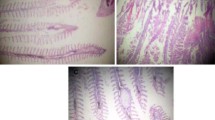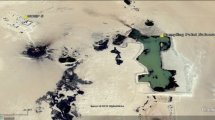Abstract
A large increase in nitrogen in domestic sewage causes a series of environmental problems and the eutrophication of water bodies. The linear alkylbenzene sulfonate (LAS) is a type of anionic surfactant. As a widely used detergent, LAS is a toxic pollutant in domestic sewage. A novel gram-negative bacterium, designated as type strain A-1 T, was isolated from septic tanks in Ankang, Shaanxi Province, China. Cells of strain A-1 T were aerobic, motile, and rod-shaped. The DNA G + C content was 63.4 mol%. It contained Q8 (57.24%) and Q9 (42.76%) as the respiratory quinones and summed feature 8 (C18:1ω7c or C18:1ω6c), summed feature 3 (C16:1ω7c or C16:1ω6c), and C16:0 as the major fatty acids. The major polar lipids of the strain were diphosphatidylglycerol, phosphatidylglycerol, phosphatidylcholine, and PE. Whole-genome sequencing of the strain was performed. The strain A-1 can strongly degrade LAS and nitrogen. At initial total nitrogen concentration less than 50 mg/L, the nitrogen removal rate reached more than 90%, and the accumulation of nitrate and nitrite was small. At initial LAS concentration less than 100 mg/L, the removal rate of LAS was higher than 80%. When the strain was added to the treatment of artificial wetland sewage, the removal effect of LAS and nitrogen after adding the strain was significantly better than that before adding the strain. The treated sewage can meet the Class A standard of the discharge standard of pollutants for municipal wastewater treatment plant (GB 18,918–2002).







Similar content being viewed by others

References
Andrade MVF, Sakamoto IK, Paranhos AGO, Silva EL, Varesche MBA (2017) Bioremoval of surfactant from laundry wastewater in optimized condition by anoxic reactors. Water Air Soil Pollut 228(4):1–13
Ausubel FM, Brent R, Kingston RE, Moore DD, Seidman JG, Smith JA, Still K (1995) Short protocols in molecular biology: a compendium of methods from current protocols in molecular biology, 3rd edn. Wiley, New York
Camargo FP, Tonello PS, Santos ACA, Duarte ICS (2016) Removal of toxic metals from sewage sludge through chemical, physical, and biological treatments—a review. Water Air Soil Poll 227(12):1–11
Chen MX, Wang H, Zhou HZ, Li Y, Tan ZL, Li XD (2013) Screening and characteristics of heterotrophic nitrification-aerobic denitrifying bacteria HN-02. Chin J Appl Environ Biol 19(4):688–693
Cheng XY, Wang M, Zhang CF, Wang XQ, Chen ZH (2014) Relationships between plant photosynthesis, radial oxygen loss and nutrient removal in constructed wetland microcosms. Biochem Syst Ecol 54:299–306
Choi KJ, Zhang S, Song JH, Hwang SJ (2017) Aerobic denitrification by a heterotrophic nitrifying-aerobic denitrifying (HN-AD) culture enriched activated sludge. KSCE J Civ Eng 21:2113–2118
Collins MD, Pirouz T, Goodfellow M, Minnikin DE (1977) Distribution of menaquinones in actinomycetes and corynebacteria. J Genmicrobiol 100:221–230
De Ley J, Cattoir H, Reynaerts A (1970) The quantitative measurement of DNA hybridization from renaturation rates. Eur J Biochem 12:133–142
Eslami H, Hematabadi PT, Ghelmani SV, Vaziri AS, Derakhshan Z (2015) The performance of advanced sequencing batch reactor in wastewater treatment plant to remove organic materials and linear alkyl benzene sulfonates. Jundishap J Health Sci 7(3):33–39
Fan J, Zhang J, Guo W, Liang S, Wu H (2016) Enhanced long-term organics and nitrogen removal and associated microbial community in intermittently aerated subsurface flow constructed wetlands. Bioresource Technol 214:871–875
Fatemeh B, Mohammad HE, Hadi E, Mohammad TG, Hossein F, Parvaneh T, Reza FF, Ali AE (2019) Removal of linear alkylbenzene sulfonate and turbidity from greywater by a hybrid multi-layer slow sand filter microfiltration ultrafiltration system. J Clean Prod 211:922–931
Felsenstein J (1981) Evolutionary trees from DNA sequences: a maximum likelihood approach. J Mol Evol 17:368–376
Fitch WM (1971) Toward defining the course of evolution: minimum change for a specific tree topology. Syst Zool 20:406–416
Ge QL (2017) Study on heterotrophic nitrification performance and key enzyme activity of Bacillus licheniformis. J Taiyuan Univ (nat Sci) 35(2):31–35
Groth I, Schumann P, Weiss N, Martin K, Rainey FA (1996) Agrococcus jenensis gen. nov., sp. nov., a new genus of actinomycetes with diaminobutyric acid in the cell wall. Int J Syst Bacteriol 46:234–239
Guo W, Li PJ, Yin W, Li HB, Xu HX (2006) Removal of anionic surfactant (LAS) in artificial rapid infiltration land treatment system. J Liaoning Tech Univ 25(2):283–285
Haddad SA, Tabatabai MA, Loynachan T (2017a) Effects of liming and selected heavy metals on ammonium release in waterlogged agricultural soils. Biol Fertil Soils 53(2):153–158
Haddad SA, Ahmed MMRM, Abd El-Azeim MM (2017b) Growth, enzymes and microbial activities of two leguminous plants grown on soils contaminated with heavy metals. Egypt J Exp Biol (bot) 13(1):69–80
Hansen JI, Henriksen K, Blackburn TH (1981) Seasonal distribution of nitrifying bacteria and rates of nitrification in coastal marine sediments. Microb Ecol 7:297–304
Jardak K, Drogui P, Daghrir R (2016) Surfactants in aquatic and terrestrial environment: occurrence, behavior, and treatment processes. Environ Sci Pollut R 23:3195–3216
Kim OS, Cho YJ, Lee K, Yoon SH, Kim M, Na H, Park SC, Jeon YS, Lee JH, Yi H, Won S, Chun J (2012) Introducing EzTaxon-e: aprokaryotic 16S rRNA gene sequence database with phylotypes that represent uncultured species. Int J Syst Evol Microbiol 62:716–721
Kimura M (1980) A simple method for estimating evolutionary rates of base substitutions through comparative studies of nucleotide sequences. J Mol Evol 16:111–120
Kiskira K, Papirio S, Hullebusch ED, Esposito G (2017) Influence of pH, EDTA/Fe(II) ratio, and microbial culture on Fe(II)-mediated autotrophic denitrification. Environ Sci Pollut R 24(26):21323–21333
Lettl A (1985) Heterotrophic nitrifying bacteria in acid forest soils polluted by atmospheric SO2. Folia Microbiol. 30:509–516
Li D, Zheng BH, Liu Y, Chu ZS, He Y, Huang MS (2018) Use of multiple water surface flow constructed wetlands for non-point source water pollution control. Appl Microbiol Biotechnol 102:5355–5368
Liu ZP, Liu SJ (2004) Progress in molecular biology of nitrification microorganisms. Chin J Appl Environ Biol 10(4):521–525
Liu YL, Liu N, Zhou YH, Wang F, Zhang YZ, Wu ZH (2019) Growth and Physiological Responses in Myriophyllum spicatum L. Exposed to Linear Alkylbenzene Sulfonate. Environ. Toxicol. Chem. 38(9):2073–2081
Ma SJ, Tang ZC, Ji XL, Fu WJ, Liu YD (2013) Causes and countermeasures of low nitrogen removal efficiency at sewage treatment plant in winter. China Water Wastewater 29(9):96–104
Ma DY, Chen S, Lu J, Song YN (2018) Study on the effect of periphyton on the water quality of eutrophic lakes. Water Air Soil Pollut 229(6):1–11
Macedo TZ, Dornelles HDS, Marques ALV, Delforno TP, Centurion VB, Oliveira VM, Silva EL, Varesche MBA (2020) The influence of upflow velocity and hydraulic retention time changes on taxonomic and functional characterization in fluidized bed reactor treating commercial laundry wastewater in co-digestion with domestic sewage. Biodegradation 31:73–89
Mesbah M, Premachandran U, Whitman WB (1989) Precise measurement of the G+C content of deoxyribonucleic acid by high-performance liquid chromatography. Int J Syst Bacteriol 39:159–167
Nie Y, Kato H, Sugo H, Hojo T, Tian X, Li Y (2017) Effect of anionic surfactant inhibition on sewage treatment by a submerged anaerobic membrane bioreactor: efficiency, sludge activity and methane recovery. Chem Eng J 315:83–91
Oliver-Rodríguez B, Zafra-Gómez A, Reis MS, Duarte BPM, Verge C, de Ferrer JA, Pérez-Pascual M, Vílchez JL (2015) Wide-range and accurate modeling of linear alkylbenzene sulfonate (LAS) adsorption/desorption on agricultural soil. Chemosphere 138:148–155
Pang Y, Zhang Y, Yan X, Ji G (2015) Cold temperature effects on long-term nitrogen transformation pathway in a tidal flow constructed wetland. Environ Sci Technol 49:13550–13557
Saitou N, Nei M (1987) The neighbor-joining method: a new method for reconstructing phylogenetic trees. Mol Biol Evol 4:406–425
Sakai N, Shirasaka J, Matsui Y, Ramli MR, Yoshida K, Ali Mohd M, Yoneda M (2017) Occurrence, fate and environmental risk of linear alkylbenzene sulfonate in the langat and selangor river basins, Malaysia. Chemosphere 172:234–241
Sasser M (1990) Identification of bacteria by gas chromatography of cellular fatty acids. USFCC Newslett 20:1–6
Seyedsalehi M, Paladino O, Hodaifa G, Sillanp M, Gurung K, Sahafnia M, Barzanouni H (2019) Performance evaluation of several sequencing batch biofilm reactors with movable bed in treatment of linear alkyl benzene sulfonate in urban wastewater. Int J Environ Sci Te 16:6763–6772
Shukla A, Trivedi SP (2018) An in vitro analysis of the rat C6 glioma cells to elucidate the linear alkylbenzene sulfonate induced oxidative stress and consequent G2/M phase cell cycle arrest and cellular apoptosis. Chemosphere 205:443–451
Sun YL, Li A, Zhang XN, Ma F (2015) Regulation of dissolved oxygen from accumulated nitrite during the heterotrophic nitrification and aerobic denitrification of Pseudomonas stutzeri T13. Appl Microbiol Biot 99:3243–3248
Tamura K, Stecher G, Peterson D, Filipski A, Kumar S (2013) MEGA6: molecular evolutionary genetics analysis version 6.0. Mol Biol Evol 30:2725–2729
Thomas R, Gough R, Freeman C (2017) Linear alkylbenzene sulfonate (LAS) removal in constructed wetlands: the role of plants in the treatment of a typical pharmaceutical and personal care product. Ecol Eng 106:415–422
Thompson JD, Gibson TJ, Plewniak F, Jeanmougin F, Higgins DG (1997) The CLUSTAL_X windows interface: flexible strategies for multiple sequence alignment aided by quality analysis tools. Nucleic Acids Res 25:4876–4882
Valipour A, Ahn YH (2016) Constructed wetlands as sustainable ecotechnologies in decentralization practices: a review. Environ Sci Pollut R 23:180–197
Veraart AJ, Bruijne WJJ, Klein JJM, Peeters ETHM, Scheffer M (2011) Effects of aquatic vegetation type on denitrification. Biogeochemistry 104:67–274
Wang XY, Zhu H, Shutes B, Fu BR, Yan BX, Yu XF, Wen HY, Chen X (2019) Identification and denitrification characteristics of a salt-tolerant denitrifying bacterium pannonibacter phragmitetus F1. AMB Express 9:1–11
Wu JM, Xu D, Zhou QH, Zhang LP, He F, Wu ZB (2019) Effects of layered combined substrates on plant growth and treatment performance and its spatiotemporal variation of vertical-flow constructed wetlands. Environ Sci Pollut R 26:23082–23094
Zhou J, Sun QY (2020) Performance and microbial characterization of aerobic granular sludge in a sequencing batch reactor performing simultaneous nitrification, denitrification and phosphorus removal with varying C/N ratios. Bioproc Biosyst Eng 43:663–672
Zhou MH, Ye H, Zhao XW (2014) Isolation and characterization of a novel heterotrophic nitrifying and aerobic denitrifying bacterium pseudomonas stutzeri KTB for bioremediation of wastewater. Biotechnol Bioproc E 9:231–238
Zhou QW, Zhu H, Banuelos G, Yan BX, Liang YX, Yu XF, Cheng XW, Chen LJ (2017) Effects of vegetation and temperature on nutrient removal and microbiology in horizontal subsurface flow constructed wetlands for treatment of domestic sewage. Water, Air, & Soil Poll 228:1–13
Zhou Y, Zhang Z, Zhang L, Xu S, Guo B, Liu Y, Xia S (2019) Promoting waste activated sludge reduction by linear alkylbenzene sulfonates: Surfactant dose control extracellular polymeric substances solubilization and microbial community succession. J Hazard Mater 374:74–82
Acknowledgments
The authors wish to thank all who assisted in conducting this work.
Funding
This work was supported in part by Tianjin Natural Science Fund (19JCYBJC23100), the Central Public-Interest Scientific Institution Basal Research Fund (2019-jbkyywf-cpz), the Specialized Funds for Tianjin Municipal Education Commission Scientific Research Plan Project (2017KJ184), and funds for the Science and Technology Innovation Project from the Chinese Academy of Agricultural Sciences (CAASXTCX2016015). Tianjin Natural Science Fund,19JCYBJC23100, peizhen chen,Central Public-interest Scientific Institution Basal Research Fund, Chinese Academy of Fishery Sciences, 2019-jbkyywf-cpz,peizhen chen.
Author information
Authors and Affiliations
Corresponding author
Additional information
Editorial responsibility: Xu Han.
Supplementary Information
Below is the link to the electronic supplementary material.
Rights and permissions
About this article
Cite this article
Li, S., Chen, P. Screening of a novel bacterium that degrades LAS and removes nitrogen. Int. J. Environ. Sci. Technol. 19, 9669–9678 (2022). https://doi.org/10.1007/s13762-021-03812-2
Received:
Revised:
Accepted:
Published:
Issue Date:
DOI: https://doi.org/10.1007/s13762-021-03812-2



